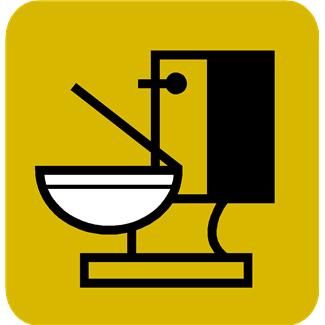No one wants to walk into the bathroom and step in a puddle of water. Your first thought is usually, “Oh God, what did I just step in?” As you hop around on one foot. This is if you’re lucky. In other cases, you may be cleaning around the toilet and notice soft spots in the flooring. This can cause dollar signs to blind your vision, and rightfully so. In both cases, a well worn toilet seal may be the cause. The good news is you can be on the lookout for signs that show you need to replace the seal and this is a job you can do on your own.
What Is the Toilet Seal?
The toilet seal sits between the toilet and the floor and acts as a gasket. The seal is made of wax and over time will become loose, cracked, or disconnected from the floor. This allows water to seep into the flooring, causing rot and structural damage to the flooring. A replacement seal can be purchased in any hardware store.
How to Determine If Replacement Is Necessary
The first sign you’ll notice is moisture around the tank. If the supply line is tight and condensation isn’t a problem, a toilet seal is usually to blame. When the toilet seal becomes cracked or loose, water leaks onto the floor. If not repaired immediately, the moisture will cause your flooring to rot. This will eventually lead to soft spots in the flooring and a major repair job.
Prepping the Area
First things first, put on a pair of rubber gloves and lay down towels around the area. Next, you’ll want to shut off the water supply line to the toilet and flush the toilet until all the water is removed from the toilet and tank. Unbolt the toilet from the floor and disconnect the supply line. Gently rock the toilet back and forth to break any remaining seal between the toilet and flooring. Remember to lift with your knees when moving the toilet as this is a heavy, cumbersome item to move. Once removed, use a scraper to remove any wax from the old toilet seal.
Installing the New Seal
Unwrap and the new seal and center it over the hole in the floor before pressing down. Set the toilet back in place, keeping it as level as possible. Sit on the toilet to ensure a good seal, reattach the nuts to the bolts and tighten with your fingers before reconnecting the water supply line. Turn on the supply line and allow the toilet to fill with water before flushing a few times. Check the area for moisture. If the area is dry, seal the area around the bottom of the toilet with caulk and thoroughly wash your hands.
It’s not a fun job, but doing this job yourself can save you a lot of money. Best of all, you’ll feel proud of yourself for accomplishing a job that plumber’s charge hundreds of dollars for.
About the Author: Nathan Ford and his wife remodeled their master bathroom. They replaced the toilet seal, added a toilet bidet seat, and retiled the entire room.
How to Know When Your Toilet Seal Needs Replacing (and How to Do It)

